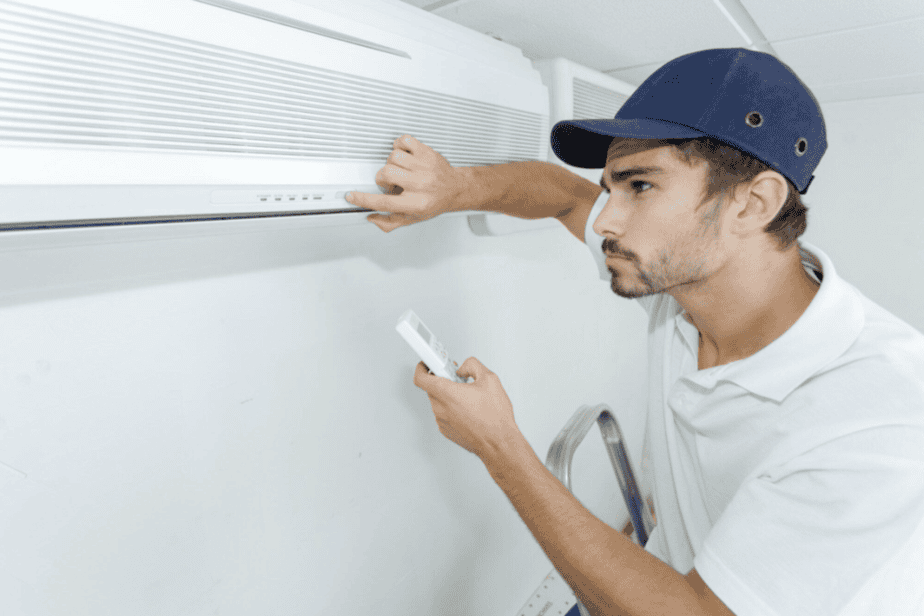
Homeowners often face the challenge of keeping their HVAC systems running smoothly. From noisy units to inconsistent temperatures, HVAC problems can vary in severity, affecting comfort and health.
But what do you do when your system starts acting up? Knowing the most common HVAC issues is key to keeping your home comfy.
We will explore the top 12 residential heating, ventilation, and air conditioning (HVAC) problems and provide practical advice on how to fix them. With regular HVAC maintenance, you can prevent these issues from becoming major headaches.
1. Clogged Air Filters
One of the most common HVAC issues is clogged air filters. These filters are responsible for trapping dust, dirt, and other particles from entering your HVAC system. Yet, if they become too dirty or clogged, it can restrict airflow and cause your system to work harder than necessary.
The solution to this problem is simple: regularly replace your air filters. Depending on the type of filter and usage, it’s recommended to change them every 1-3 months. It will keep your system running and improve indoor air quality.
2. Thermostat Malfunction
A malfunctioning thermostat can cause major issues with your HVAC system. It can lead to inconsistent temperatures, frequent cycling, and even complete system failure.
To troubleshoot this problem, first check the batteries in your thermostat. If they are dead or low, replace them. If that doesn’t fix the issue, it’s recommended to call an HVAC technician for further diagnosis and repair.
3. Refrigerant Leaks
The refrigerant is what cools the air in your HVAC system. If there is a leak, it can result in warmer air blowing out of your vents and higher energy bills. Refrigerant leaks can also be harmful to the environment.
If you suspect a refrigerant leak, call an HVAC technician immediately. They will be able to locate the leak and repair it, as well as replenish the lost refrigerant.
4. Dirty Condenser Coils
Condenser coils are located outside and can collect dirt, debris, and grime. If they become dirty, it will affect the efficiency of your heating, ventilation, and air conditioning (HVAC) systems.
To fix this issue, turn off the power to your unit and then clean the condenser coils with a hose or soft brush. It’s crucial not to use too much pressure, as it can damage the fins on the coils.
5. Electrical Control Failure
HVAC systems rely on electrical controls to operate. If these components fail, it can result in your system not turning on at all or frequent cycling.
If you suspect an electrical control failure, call the heating, ventilation, and air conditioning (HVAC) technician for repair. Attempting to fix this issue yourself can be dangerous and cause further damage to your system.
6. Drainage Problems
HVAC systems produce condensation, which is usually drained away through a pipe or drain line. If this gets clogged, it can result in water leaks and potential water damage to your home.
To fix this issue, locate the drainage pipe or line and check for clogs. You can use a wet/dry vacuum to remove any blockages. If the issue persists, call a professional HVAC technician for further help.
7. Faulty Capacitors
Capacitors are responsible for providing the initial jolt of electricity needed to start your HVAC system. If they fail, it can result in your system not turning on at all or making strange noises.
Replacing a faulty capacitor should only be done by a professional HVAC technician. They will have the necessary tools and knowledge to replace the component.
8. Worn Out Fan Belt
A worn-out or damaged fan belt can cause your HVAC system to make loud, screeching noises. It can also lead to improper air circulation and higher energy bills.
To fix this issue, turn off the power to your unit and then tighten or replace the fan belt. If you are unsure how to do this, it’s best to call a professional HVAC technician for help.
9. Ductwork Leaks
Leaky ductwork is a common HVAC issue and a major energy waste. If your ducts have holes or gaps, it can result in warm or cool air escaping before reaching its intended destination.
To fix this problem, inspect your ductwork for any visible leaks. You can use duct tape or mastic sealant to patch up small holes. For larger gaps or cracks, call a professional HVAC technician for repair.
10. Dirty Evaporator Coils
Like condenser coils, evaporator coils can collect dirt and grime over time. It can lead to reduced efficiency and poor air quality.
To clean the evaporator coils turn off the power to your unit. Then, use a soft brush or compressed air to remove dust or debris. Avoid using water, as it can damage the coils if not dried.
11. Blower Motor Issues
The blower motor handles circulating air throughout your home. If it malfunctions, it can result in weak airflow or no air coming out.
To fix this issue, first check the motor for any visible damage. If it looks damaged, call a professional HVAC technician for repair or replacement. If there is no damage, it could be an electrical issue and should be looked at by a professional.
12. Dirty Flame Sensor
For those with a gas-powered HVAC system, a dirty flame sensor can cause issues. This sensor handles detecting the flame and turning off the gas if it doesn’t sense one.
To clean a dirty flame sensor, turn off the power to your unit and remove any buildup using fine sandpaper or steel wool. It’s crucial not to use anything too abrasive, as it can damage the sensor. If you are unsure how to do this, call a professional HVAC technician for help.
Learning the Most Common HVAC Problems and How to Fix Them
By being aware of these common residential HVAC problems and knowing how to fix them, you can keep your system running and avoid potential breakdowns. Schedule regular maintenance with a professional HVAC technician. It is to prevent these issues from occurring in the first place.
With proper care and attention, your HVAC system will continue to provide comfort in your home for years. Keep this information handy and be prepared for any HVAC issues that may arise.
Did you find this article helpful? If so, check out the rest of our site for more informative content.

















Follow Us